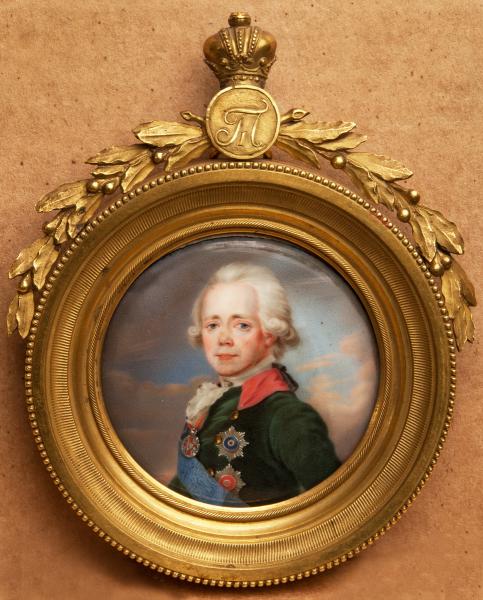Emperor Paul I (1754–1801) was the only son of Emperor Peter III and Empress Catherine the Great. In 1762 he was named heir to the throne and given the title of Tsesarevich. He received an excellent education and believed in the romantic ideals of enlightened absolutism, but was critical of the policies of Catherine the Great. He spent decades waiting for the power that his mother had usurped. He became emperor in 1796. His efforts were intended to be to the state’s benefit, but he often acted against common sense. At his coronation in Moscow in 1797 he promulgated the Establishment of the Imperial Family which laid down that accession to the throne should be by primogeniture in the male line. He reformed local government. He restricted the rights of the nobility and allowed corporal punishment to be used on them. Military reforms affected not only uniforms and equipment, but also training and the tactics of officers and soldiers, with an emphasis on the Prussian military school. In an effort to protect Russia from revolutionary ideas, he banned the import of books from France and tightened censorship. In 1798, he took on the title of Grand Master of the Knights of St John of Jerusalem, of Rhodes and of Malta (Hospitaller), and took it under his patronage. He was killed by conspirators in St Michael’s Castle during the night of 11–12 March 1801, but according to the official version he died of an apoplectic fit (a stroke).
«Виртуальный Русский музей» в социальных сетях:

